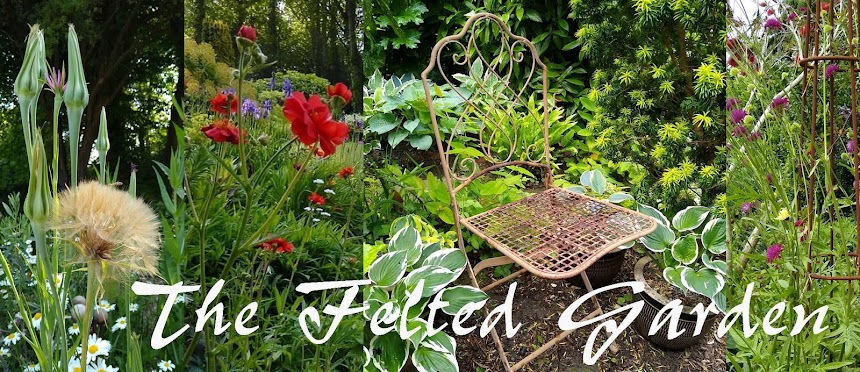I’d been thinking about holding a NUNO workshop for a while…
Although I have done a fair amount of nuno felting over the years I wanted to
return to the beginning and refresh my own knowledge.
return to the beginning and refresh my own knowledge.
This was the perfect opportunity to play around with different fabrics,
and also experiment with fabric dyes for the first time.
NUNO is the Japanese word for fabric…
And nuno felting is a relatively recent felting phenomenon, which came about
when textile designers started to experiment with wet felting in new ways.
In the 1990’s an Australian designer Polly Stirling incorporated light-weight
fabrics, such as silk, with traditional wet felting fibres and discovered that the wet
wool fibres were receptive to the woven fabrics. A ‘felted fabric’ resulted
with quite different characteristics to traditional felt
and was given the term nuno felt.
and was given the term nuno felt.
NUNO felting is relatively simple!
It’s using the basic traditional wet felting methods and adding fabric…
But it does take time to perfect, and to persuade the wool fibres to penetrate the
fabrics to achieve the wonderful textures associated with nuno…
The aim of this nuno workshop was to felt small sample pieces,
using different fabrics and fibres. To see what worked and what didn’t
and to gain knowledge and experience before embarking on
more ambitious projects!
My preparations included dyeing quantities of cotton muslin and silk to use on the day.
I bought a Procion MX dye starter kit which had six colours plus all the
necessary additives + fixers. The instructions were good and I was pleased with
the colour range and the fast-ness of the dye throughout the final rinsing
and felting processes.
I also used some Pebeo Setasilk fabric paints on silk and achieved good results.
In this case the colours were made fast by ironing and remained fixed and vibrant throughout the felting process, as you can see here,
and click on any of the photos to see more detail...
and click on any of the photos to see more detail...
My students also bought along stacks of fabrics and fibres!
Sharing and trying out different materials, and having fun was very
much the spirit of the day...
much the spirit of the day...
Wet felt is not easy to photograph well especially late on a wet afternoon,
so here's just a small selection of finished pieces
showing the amazing range of effects and textures achieved...
so here's just a small selection of finished pieces
showing the amazing range of effects and textures achieved...
Finally, the RULES of NUNO…
There are NO rules—there are too many variables!
But there are some guidelines, such as choice of fabric. Those with a loose
visible weave will make it easier for fibres to penetrate and felt in.
visible weave will make it easier for fibres to penetrate and felt in.
Natural fabrics and fibres are easier to use. Wool fibres attach more
readily to other organic fabrics such as silk, cotton and wool
readily to other organic fabrics such as silk, cotton and wool
but in my experience synthetics like polyester mixes also produce fantastic results!
Use a cool soap solution in the early stages - if the soap is too warm it may cause
fibres to felt too quickly before penetrating through the fabric!
Take it slowly, some fabrics will take much longer to attach to fibres than others
especially if you are using a mix of textures in the same piece.
fibres to felt too quickly before penetrating through the fabric!
Take it slowly, some fabrics will take much longer to attach to fibres than others
especially if you are using a mix of textures in the same piece.
The best advice is to keep an open mind and enjoy experimenting,
and there will be further opportunities next year when more NUNO workshops
will feature in the 2020 programme.







